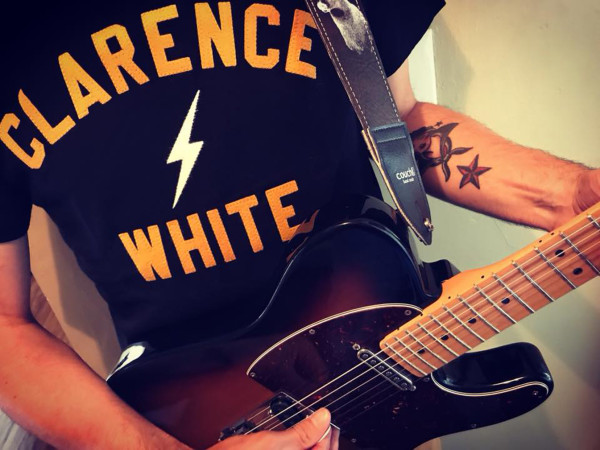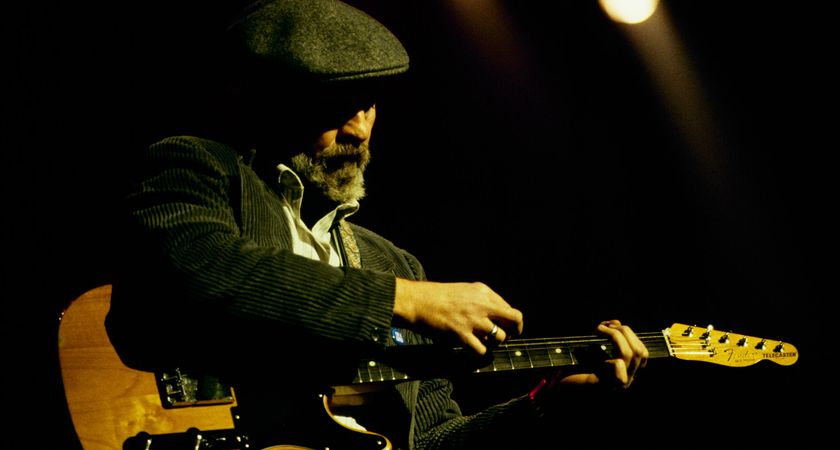The role of a lead guitarist in the songwriting process
Your mind might bend a completely different way than those who compose and write music, but you both share a common mission

The mind of a songwriter is often wired differently than that of a guitarist.
Though the two cross paths often, it’s rare to see a pro-level guitar player (particularly a lead guitarist) and a successful songwriter embodying the same human being.
Some exceptions might include Kenny Wayne Shepherd, Eric Clapton and Brad Paisley.
But usually it takes two.
Duos like Tom Morello and Chris Cornell, Mark Tremonti and Myles Kennedy or Hank Garland and Elvis Presley are far more common when it comes to creating music that’s appealing to both the soul and the technical guitarist.
But if you’re that guitar player, the guy or gal whose expertise is wrapped up in solos, arpeggios and all the technical abilities thereof, how do you approach the songwriting process? What’s your role?
If you’re good, you’ll find yourself getting invitations for session work and opportunities to contribute to other people’s music. When that time comes, here’s what your job description will entail.
1. To Increase the Originality of the Music
A chord progression by itself doesn’t make a song.
In fact, there are only a few commonly used chord progressions for most of the primary music genres and a ton of music that’s derived from them.
The melody and layering, whether it comes from a vocalist or a guitar player, are the primary ways one piece of music can be differentiated from another. It makes music better by increasing the quality and originality of the end product.
When it comes to songwriting, it’s your job to make sure you increase a song’s quality by using melody and layering.
2. To Add Melody and Melodic Accents
Melody is one of the most crucial parts of a lead guitarist’s job description, especially when you’re talking about songwriting. If you’re working with a songwriter, they’ve likely already come up with lyrics and a chord progression, so melody will build on that material.
Loosely, this is the process you’ll follow:
1. Learn the chord progression.
2. Memorize the melody of the lyric line.
3. Accent either or both with a secondary melody from your guitar.
To do this, most guitar players will follow the chord progression, as opposed to the lyrical melody. An exception would be Kurt Cobain’s solo on “Smells Like Teen Spirit,” where he closely mimics to the lyrical melody of the song’s verse.
Though the more functional solution is to reference the chord progression. One of the simplest ways to do that is to create an arpeggiated version of the bass line.
So if the song’s chorus is G, C and D, your “melodic accent” would be something like this:

When recording you could minimize it even further by removing the root notes and playing only the higher notes on the second and third strings.

So “melodic accent” is really just a fancy term to describe simple fills.
Additionally, this can be a solo, a short lead pattern or any note-by-note, non-chord lick that you come up with to contribute to the sounds that are already there. If you’re careful, you’ll be able to walk the line between a melody that’s too intrusive and one that’s hard to notice.
Artists who do this well would include the Edge (David Evans) of U2, Brian Welch of Korn and Joe Satriani, to name just a few. They’re good names to learn from and emulate.
So keep in mind that anytime you’re adding a short fill or a solo, you’re creating some kind of melody.
In that instance, you’re sharing just as much responsibility as a vocalist. Thus it becomes more important for you to be musical, melodic and complimentary with your guitar than it does to be technical and fun to watch.
3. To Develop and Add Layering
Though it can involve melody, the practice of layering is an altogether different discipline and an equally important part of a guitar player’s role in the songwriting process.
While contributing melody requires a certain level of creative input, layering is a matter of adding something to a vocal line or guitar track that’s already in place. It can even be a guitar part you came up with.
Whatever the case may be, it’s assumed you’re layering over something that’s already recorded. Layering can involve one or more of the following practices.
1. Simply duplicating a chord progression or lead pattern.
2. Adding an effect layer to a chord progression or lead pattern.
3. Recording separate guitar tracks for the left and right channels.
The details are largely up to the songwriter, though most people who hire a session guitarist will accept ideas and input in this area. If you’ve got session work in your future, reading up on layering guitars in the studio would be a practical way to prepare.
How to sum it all up?
If you had to condense the answer to this question, you might say your role is to invoke an emotional response from those who might listen to the music you’re creating.
Adding melody, layering, effects and harmony are all about increasing a song’s ability to appeal to someone’s emotions.
That’s your job, not just as a guitar player, but as a musician.
So sure, your mind might bend a completely different way than those who compose and write music, but you both share a common mission. Different roles, with the same destination.
Robert Kittleberger is the founder and editor of Guitar Chalk and Guitar Bargain. You can get in touch with him here, or via Twitter, Facebook and Google Plus.
Get The Pick Newsletter
All the latest guitar news, interviews, lessons, reviews, deals and more, direct to your inbox!
Bobby is the founder of Guitar Chalk, and responsible for developing most of its content. He has worked with leading guitar industry companies including Sweetwater, Ultimate Guitar, Seymour Duncan, PRS, and many others.

“Jeff was playing through his dodgy Marshall and didn’t like the sound. He said, ‘We’ll do it again, later on…’” Mick Rogers may be in possession of Jeff Beck’s last-ever studio recording

“I could try and recreate his vibrato for the rest of my life. It’s never going to happen. If I got to play his guitar through his rig, it’s not gonna sound like him”: Tony Iommi changed his life – now Scott Ian is playing Sabbath’s last stand




![Joe Bonamassa [left] wears a deep blue suit and polka-dotted shirt and plays his green refin Strat; the late Irish blues legend Rory Gallagher [right] screams and inflicts some punishment on his heavily worn number one Stratocaster.](https://cdn.mos.cms.futurecdn.net/cw28h7UBcTVfTLs7p7eiLe-840-80.jpg)






